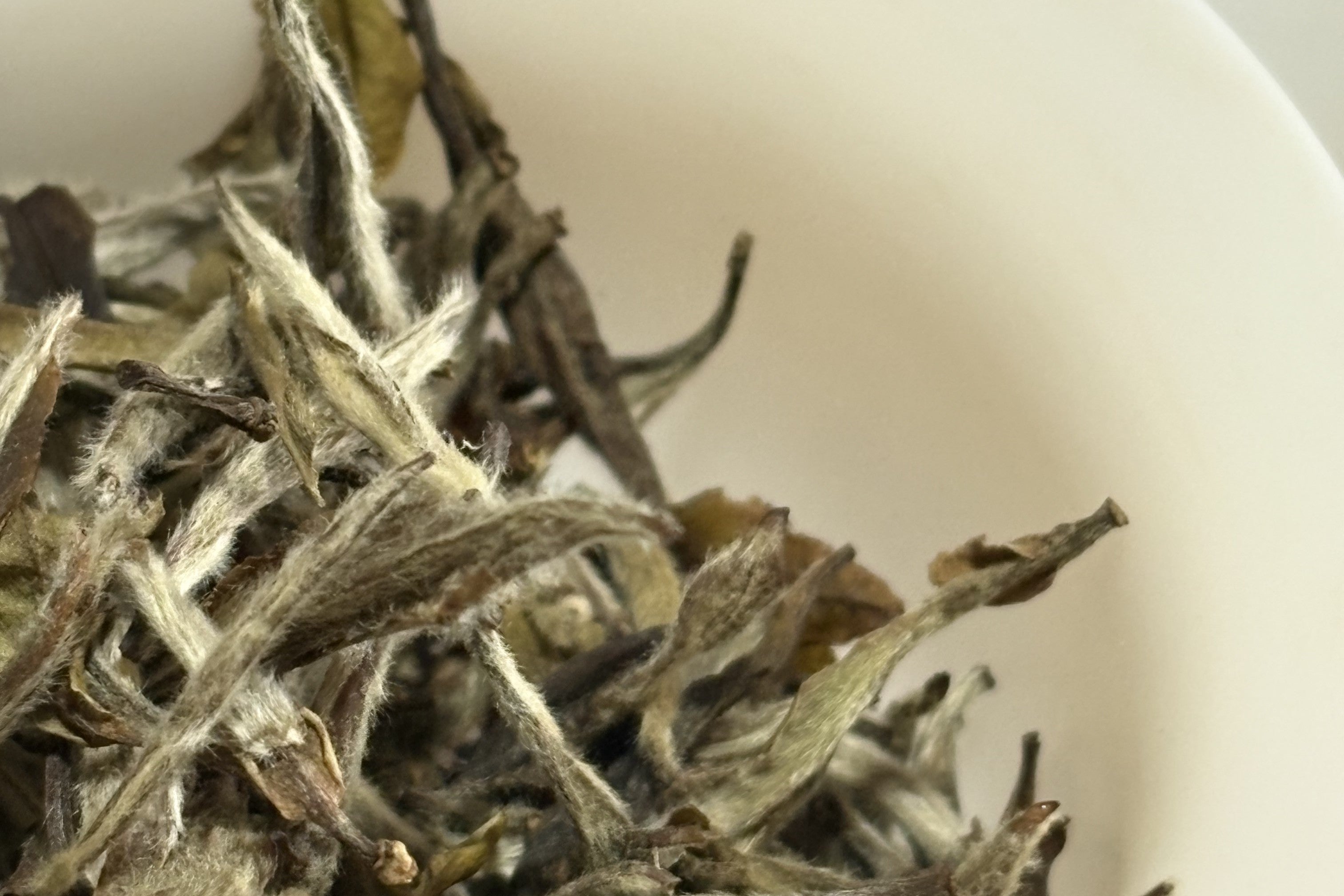Especially the good ones.
Look a little closer, and you’ll find that some of the finest Chinese teas are covered in soft, silvery fuzz. Not only is it perfectly natural, it’s actually a mark of quality.
Tea Fur Is a Sign Tenderness
That delicate layer of fuzz, known in Chinese as 毫 (háo), appears on the youngest, most tender buds of the tea plant. These buds are often hand-picked early in the season, before the leaves have fully unfurled.
Much like how young leaves on some plants or flowers have a fine coating of fuzz to protect them, tea buds are also covered in this natural down. In fact, it’s one of the indicators that the tea was harvested selectively.
What Kinds of Tea Have Fur?
Not all teas have visible fur, but in certain categories it’s a prized feature:
- White Teas like BAIMUDAN White Peony Tea (白牡丹) are famous for their silvery-white down. In Hokkien, the furs are often called "pekoe" (白毫) — a word that later made its way into English tea grading.
- Green Teas like BILUOCHUN Green Tea (碧螺春) and MAOFENG Green Tea (毛峰) may also show fine fuzz on the buds.
- Black teas like JINLUO Golden Snail Black Tea (滇红金螺) are coated in gold velvet — these are actually buds with oxidised hairs, giving the tea both a stunning colour and velvety depth.

Furry JINLUO Golden Snail Black Tea, reminiscent of luscious tiger hide.
Does the Fur Affect the Taste?
In white teas, especially BAIHAOYINZHEN Silver Needle White Tea, pekoe fragrance (毫香) is highly sought after. This unique botanical aroma comes through when hot water flushes out the bio-chemical compounds present in the tea hairs.
In the case of high grade white teas, you may see the tiny hairs floating in your cup, a sign you are sipping on delicately made tea.
A Detail Often Overlooked
In professional tea assessment, 毫毛 (háo máo) is part of the grading criteria. It tells us about:
- The picking standard – young buds vs. mature leaves
- The processing quality – careful handling preserves the hairs
- The origin and cultivar – certain varieties naturally produce more down
At Teahills, we pay close attention to these details which are indicators of the care taken behind each tea. Fine furs tell us subtly, the quality of the leaf leaf picked and how gently it was handled.
Grading levels:
- 略有毫毛 – Some tea furs (~30%)
- 有毫毛 – Tea furs present (~50%)
- 显毫毛 – Obvious tea furs (~80%)
- 满身披毫 - Entirely coated in tea furs (~100%)

Can you tell which is the higher grade BAIMUDAN?
So Next Time...
...you open a packet of white or green tea, pick up a leaf for a closer look.
Upon inspection, you might notice a soft silvery coat of fur. Congrats on landing your hands on a good tea.
Curious to try teas dressed in a coat of fur?
[Explore our CUIFENG high mountain green tea →]
[Explore our JINLUO golden snail black tea →]


0 comments